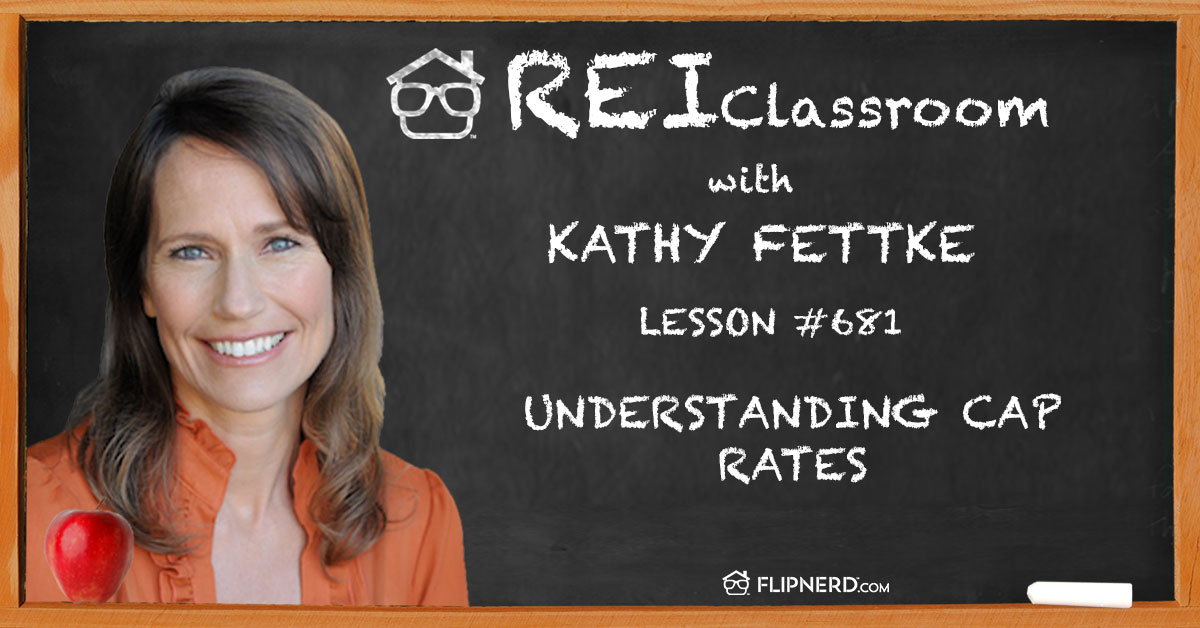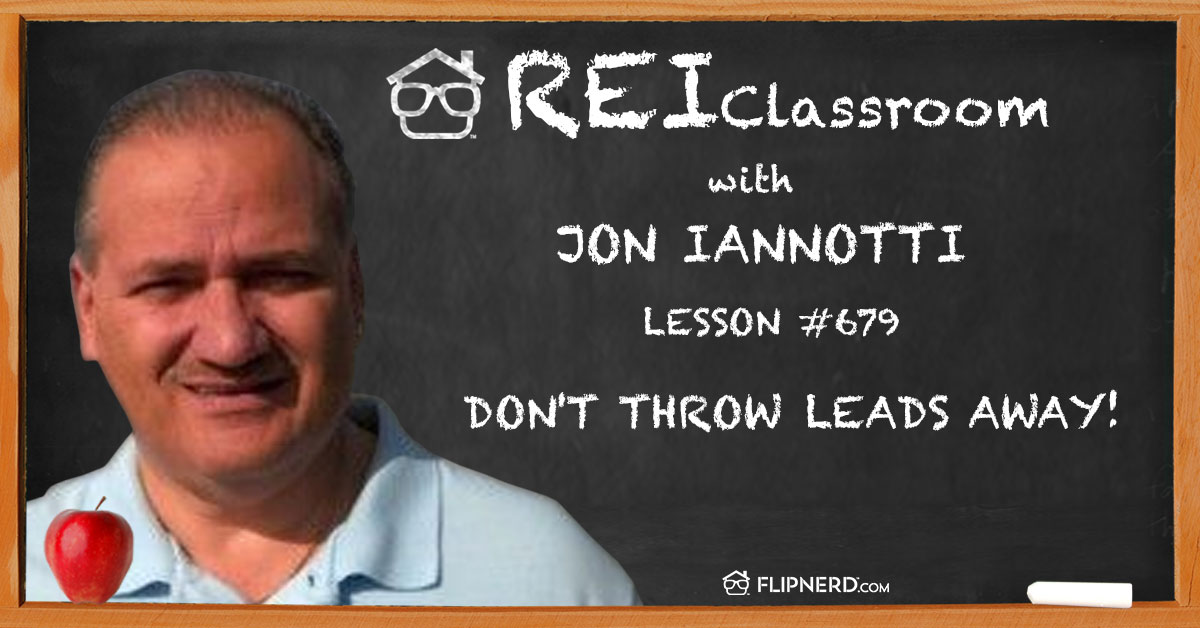Today’s REI Classroom Lesson
Today, Jim Huntzicker talks to us about how there are opportunities lost when a real estate investor fails to follow up on a home they made a deal on.
REI Classroom Summary
By checking the status of a property from the time your offer is rejected up until the deal is closed, there is a chance that the home can come back on the market. If this happens, the buyer is might be more willing to look at your offer and take it.
Listen to this REI Classroom Lesson
Real Estate Investing Classroom Show Transcripts:
Mike: Welcome back to the FlipNerd.com REI Classroom where experts from across the real estate investing industry teach you quick lessons to take your business to the next level. Now, let’s meet today’s expert host.
Jim: Hey everybody. It’s Jim Huntzicker, your host today for the REI Classroom. Today we’re going to cover the offer follow-up and specifically offer follow-up in the MLS.
Mike: This REI Classroom real estate lesson is sponsored by uglyopportunities.com.
Jim: The MLS is no different. Just like anything there’s a fortune in the follow-up and as you’ll see in the MLS that if you’re using it to get deals, you only get about 8 to 10% and those are structured offers. Those are not offer bought offers. Those are structured, detailed, go look at the property, send your project manager to look at the property, run the comps, run a property repair estimate sheet on it and submit an offer.
Calling the agent, going through the motions, submitting a proper offer with proof of funds, with your articles of incorporation. And if you submit 100 offers like that, if you’re good, you’ll get 10. Maybe 12. So it’s 10 to 12% if you’re good. If you’re new, it might be 6 to 8%.
So just know that the reason I’m explaining that is because most of my students get very frustrated and they put out four or five offers and they call me and they’re like “This doesn’t work. This just doesn’t work. Nobody’s accepting my offers.” And I’m like “How many offers have you put out? Are we close to at least 20?” And they’re like “Well, four.” I’m like “Put out 50 and then we’ll find out if it doesn’t work.”
Here’s something else I’ll tell you. This is what I tell them, how I get them around it. Walt Disney, of all things, which I’m not a huge Disney fan but I think Disney’s cool. Walt Disney, did you know when he went to build Disneyland, do you know how many bankers he went and talked to that said no to him before he finally got a yes? One hundred and seven. A 107 no’s, but he was determined to make that happen and so what did he do? He went to the 108th one which I think most people would’ve quit after 20, 30, 40, 50, 60, 80, 100. A 108 he finally made it happen and now look. I think they bring in $12 million a day or something crazy.
So of the 90% you don’t get there’s a fortune there that if you just follow-up with them. So most people and a lot of my students come in. They don’t follow-up. They put the offer in, it gets rejected, that’s it, they move on. They say “Won’t the agent call me back if . . . I submitted my offer already. He knows I’m interested in the property. Won’t they just call me back?”
Well, no. They don’t do that. It’s not the way it works. They don’t know if you know what you’re doing and so there’s so much opportunity in the follow-up and especially if the property comes between a 90 to a 120-day period it’s been under contract. If it’s an REO it’s been under contract for 90 to 120 days which is usually because the bank ended up accepting a 203K home nightmare loan. I mean, it’s a home renovation loan but they are nightmares which is why they take 60 to 70 days anyway to get done. If there’s a problem, it’ll take 90 to a 100 days and that’s where they usually start falling apart.
Now, if you can get to a property or call and schedule a showing, you don’t have to go to it but you have to call and they have to think you went to it. So call and schedule a showing and then submit your offer within a couple of hours of it reactivating and as long as it’s a legitimate, good, full offer, it can’t be 50% of list price but it has to be a decent offer. I get offers accepted within hours after they’re active in that 90 to a 120 day period because the bank had wrote that off their books months and months and months ago and so now all of a sudden it’s active in inventory again.
That asset manager cannot have it. It makes them look bad even though it wasn’t their fault. But maybe it was their fault for accepting the FHA 203K home renovation loan. So they’re like “Oh, crap.” So they just need it back under contract as soon as possible. So they don’t even have to tell their boss that they have another reactivated sale. They don’t want that. They’re going to reactivate it and if you can get it under contract within hours, they want to put it back contingent as soon as possible. So the follow-up.
And that’s not just the 90 to 120 days. I follow-up properties even after . . . every time you submit an offer, if the listing agent did not get your highest and best offer, this is very important. Always submit it to them. A full on, actual offer. If they say “Rejected. We accepted another offer.” And you’re like “Crap, I didn’t even know you had other offers.” Because that will happen. Well, say you were at 190 and you actually were willing to pay 210, but you were trying to steal it. First of all, never do that because if it’s a new listing, you’re not going to be able to steal it. Just give him your full price.
But if you don’t, write the 210 on there, submit it to the listing agency. “I know you’ve already rejected my offer but I did not give you my highest one. I wanted to make sure you had my highest and best offer in the event that this deal you have starts falling apart. You know that I was actually willing to go to 210.” And don’t just call them and tell them, don’t just send them an email, don’t send them a text. Send them a full on offer so that that way if that falls apart, he can go to the seller and say “Hey, I had this full on offer at 210. We rejected him at 190 but he actually was willing to pay 210.” Very, very, very important stuff. That’s a huge tip there that most people just don’t even think about.
But the follow-up stuff can be in 30 days, 60 days. It doesn’t have to be 90 to a 120. That 90 to a 120 day tip I shared with you is just specifically about REOs because there was a big opportunity and reactivated sales that had been under contract for that long.
But either way just follow-up 30, 60, 90, 120 days. If it’s a property you put an offer on and it doesn’t get accepted, you follow it till it either closes, meaning the other person did buy it or it back on the market. One of the two things is going to happen. So obviously as soon as it closes, you’re done with it but then you should be following it to see how you missed it.
See what it closed for, look what it closed for, learn from that. Did you miss it by 3,000? Could you have gone up 5,000? How did you miss the property? So you need to study your market so that you understand. I mean, following the properties is not just about “Okay, can I get it again?” But that is why you’re following it.
But when you don’t get it, meaning when it closes, now’s your opportunity to start doing your market research and seeing what your competition is paying so you can learn that way too. So the fortune in the follow-up has to do with two things. One, you’ll be able to buy properties, but let’s just say you’re new. You’re like “I can’t even buy properties.” Well, why don’t you put what you think you can pay and follow the offers? Follow the property. So then you’ll see what other investors are paying and then, how about this?
How about you see what they sell it for when they rehab and sell it and then you could learn the business that way. I always tell new students who don’t know how to do things or they’re like “I don’t know prices or I don’t know this, I don’t know that.” I’m like “How about you do some market research?” What do you think college is for? People pay hundreds of thousands of dollars for college to get out there and make what? 30,000? Just kidding.
But the point is that this is no different. You could make millions of dollars as a real estate investor using just the MLS as a deal source. It is very important to make sure you understand how. So following the sales that you don’t get will do two things. One, you may be able to buy properties. Two, you’ll be able to learn what other people are paying and why you missed it.
So I hope you found that stuff useful. We’ll see you in the next REI Classroom. By for now.
Mike: HomeVestors, the We Buy Ugly Houses folks is a franchised system of hundreds of real estate investors that have purchased over 65,000 houses. If you’d like to learn more about the most powerful real estate investing system in existence, whether you’re a pro or looking to take your business to the next level or whether you have no experience at all but a burning passion to be successful at real estate investing, please visit FlipNerd.com/ugly to learn more.
Please note, the views and opinions expressed by the individuals in this program do not necessarily reflect those of FlipNerd.com or any of its partners, advertisers, or affiliates. Please consult professionals before making any investment or tax decisions, as real estate investing can be risky.
Are you a member yet of FlipNerd.com, the hottest real estate investing social community online? If not, you can join for free in less than 30 seconds and get access to hundreds of off-market deals, vendors in your market to help you in your business, and you could start networking with thousands of other investors just like you. Get your free account now at FlipNerd.com.
Please check out the Flip Nerd family of real estate investing shows where you can access hundreds of expert interviews, quick tips and lessons from leaders across the real estate investing industry. They’re available at FlipNerd.com/shows or simply search for Flip Nerd in the iTunes store.










